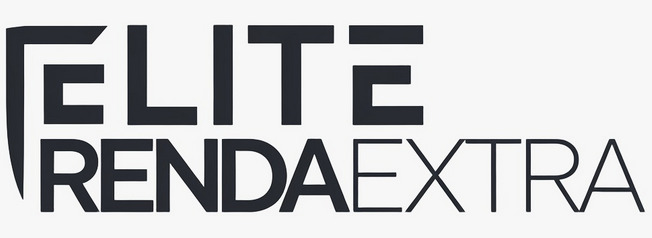Navigating the world of loans can sometimes feel like a complex journey, especially when you’re just starting to explore your options. Whether for a major purchase, consolidating debt, or managing an unexpected expense, understanding the landscape of borrowing in Canada is the first step toward making a sound financial decision.
This information aims to demystify the process by outlining what lenders in Canada typically look for. Knowing these requirements beforehand can help you prepare, increase your confidence, and streamline your application process when the time comes.
Understanding the Basics of Loan Qualification in Canada
Before diving into specific documents and numbers, it’s helpful to understand the lender’s perspective. When you apply for a loan, a lender is essentially assessing risk. Their primary question is: “How likely is this applicant to repay the loan in full and on time?”
To answer this, they look at a combination of factors that paint a picture of your financial health and reliability. Each element gives them a clue about your past financial behaviour and your current capacity to take on new debt. While every lender has its own specific criteria, the core principles of qualification are quite consistent across the Canadian financial industry.
Core Requirements for Most Canadian Loans
Here are the fundamental pillars that most lenders in Canada will examine when you apply for a loan.
Age and Residency Status
This is the most basic checkpoint. To enter into a legally binding contract like a loan agreement in Canada, you must have reached the age of majority in your province or territory. This is 18 in Alberta, Manitoba, Ontario, Prince Edward Island, Quebec, and Saskatchewan, and 19 in British Columbia, New Brunswick, Newfoundland and Labrador, Nova Scotia, Northwest Territories, Nunavut, and Yukon.
Beyond age, you must also have a valid status in Canada. Typically, this means you are a:
- Canadian Citizen
- Permanent Resident
- Non-resident with a valid Canadian work permit
Lenders need to ensure you have a stable and legal presence in the country throughout the loan’s term.
A Stable Source of Income
Your income is perhaps the most critical factor. Lenders need to see that you have a consistent and reliable flow of money to cover your monthly loan payments. They aren’t just looking at the amount but also the stability of that income.
Acceptable sources of income can include:
- Full-time or part-time employment
- Verifiable self-employment income
- Pension, CPP, or other retirement benefits
- Long-term disability payments
- Certain government benefits
You will be required to provide proof, which we will detail in a later section.
Your Credit Score and History
Your credit history is a detailed record of how you’ve managed debt in the past. This information is compiled by Canada’s two main credit bureaus, Equifax and TransUnion, and summarized into a three-digit credit score.
This score acts as a quick reference for lenders. A higher score generally indicates a lower-risk borrower. While the exact ranges can vary, they are generally interpreted as:
- 760 and above: Excellent
- 725 to 759: Very Good
- 660 to 724: Good
- 560 to 659: Fair
- Below 560: Poor
A strong history of on-time payments, low credit card balances, and a long credit history will positively impact your score. Conversely, missed payments, high balances, and too many recent credit applications can lower it.
Debt-to-Income (DTI) Ratio
Your DTI ratio is a simple but powerful calculation. It compares your total monthly debt payments (including things like rent/mortgage, car payments, credit card minimums, and other loan payments) to your gross monthly income. It’s expressed as a percentage.
For example, if your monthly debt payments are $2,000 and your gross monthly income is $5,000, your DTI is 40% ($2,000 / $5,000). Lenders use this to gauge whether you can comfortably handle another monthly payment. A lower DTI is always better, as it suggests you have more disposable income and are less likely to be overwhelmed by your financial obligations.
What Documents Will You Likely Need?
Preparation is key. Gathering your documents in advance can make the application process much smoother. While the exact list may vary by lender and loan type, you should be prepared to provide some or all of the following:
- Government-Issued Identification: A valid driver’s license, passport, or provincial photo ID to verify your identity.
- Proof of Address: A recent utility bill, bank statement, or rental agreement that shows your current address.
- Proof of Income: This is crucial. Be ready with recent pay stubs (usually the last 2-3), a letter of employment, your most recent T4 slips, and/or your Notice of Assessment (NOA) from the Canada Revenue Agency (CRA). If you are self-employed, you will likely need to provide the last two years of tax returns and business registration details.
- Bank Statements: Often, lenders will ask for 30-90 days of bank statements to see your cash flow, confirm your income deposits, and check for any financial red flags.
- Details of Your Assets and Liabilities: A list of what you own (assets like property, investments) and what you owe (liabilities like other loans, credit card debt).
Different Loan Types Can Have Different Requirements
It’s important to recognize that the stringency of these requirements can change based on the type of loan you are seeking.
Personal Loans
These are often unsecured, meaning there is no collateral attached. Because this presents a higher risk to the lender, they will heavily scrutinize your credit score and income stability. The better your financial profile, the better the interest rate you are likely to be offered.
Mortgages
Qualifying for a mortgage is typically the most rigorous process. In addition to all the standard requirements, you will need to have a sufficient down payment and pass the federal mortgage stress test, which ensures you can still afford your payments if interest rates rise.
Car Loans
For a car loan, the vehicle itself usually serves as collateral. This can sometimes make the requirements slightly more flexible than for an unsecured personal loan. However, your credit score and income remain vital in determining your interest rate and loan term.
Improving Your Chances of Loan Approval
If you’re concerned about your eligibility, there are proactive steps you can take to strengthen your financial profile.
First, obtain a copy of your credit report from both Equifax and TransUnion. Review it carefully for any errors that might be hurting your score and dispute them if necessary. Second, focus on paying down high-interest debt, like credit card balances. This will directly improve your DTI ratio and show lenders you are responsible with credit. Building a small savings history can also demonstrate financial discipline.
Finally, understanding where you stand is the most powerful tool. By reviewing these common requirements, you can assess your own financial situation and identify areas for improvement long before you submit an application.

